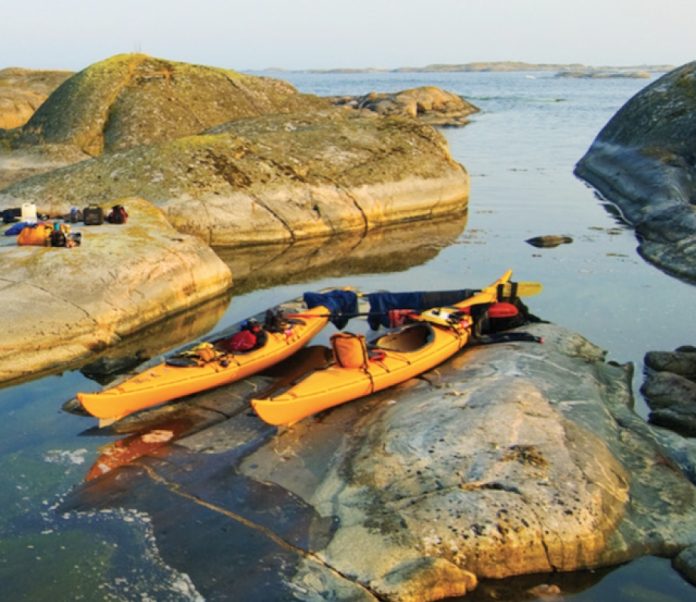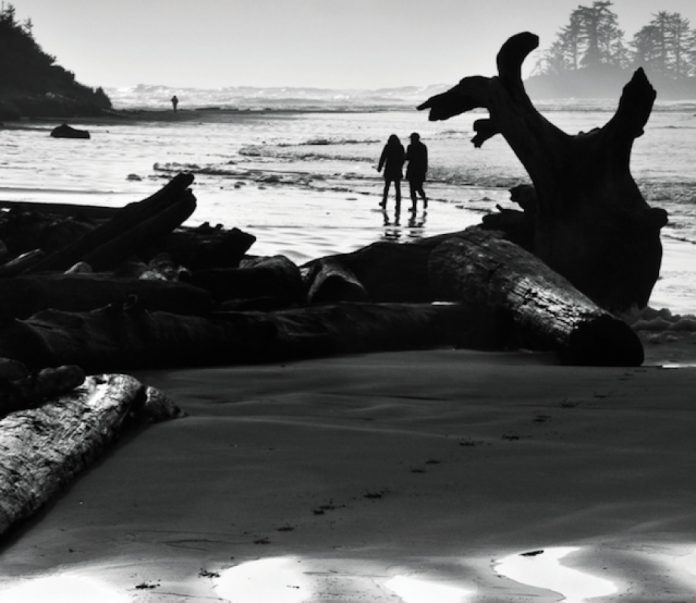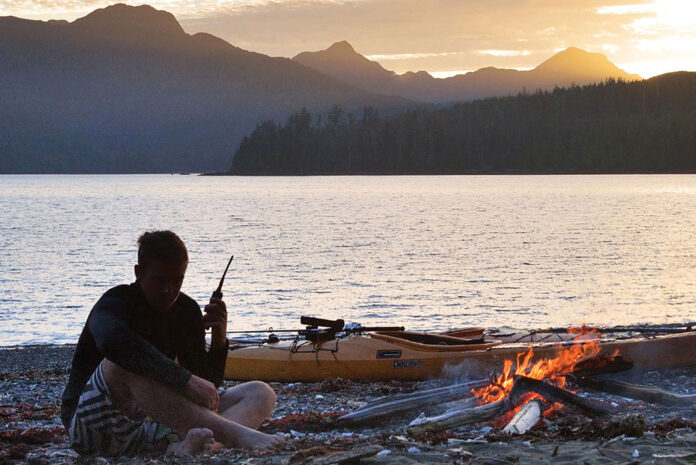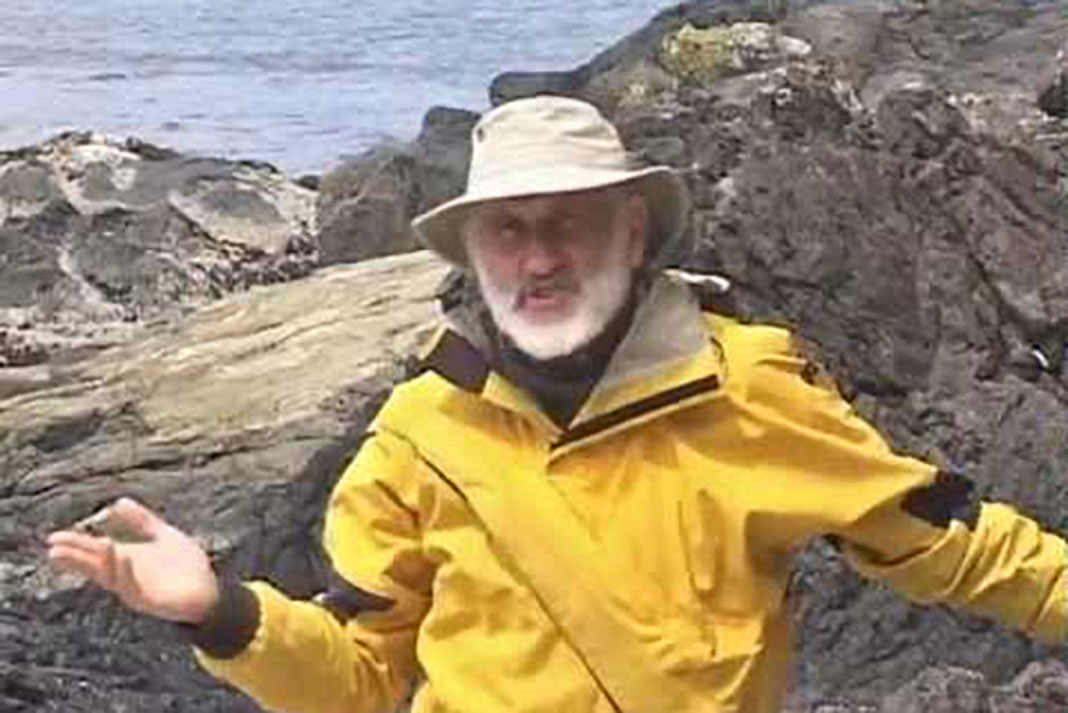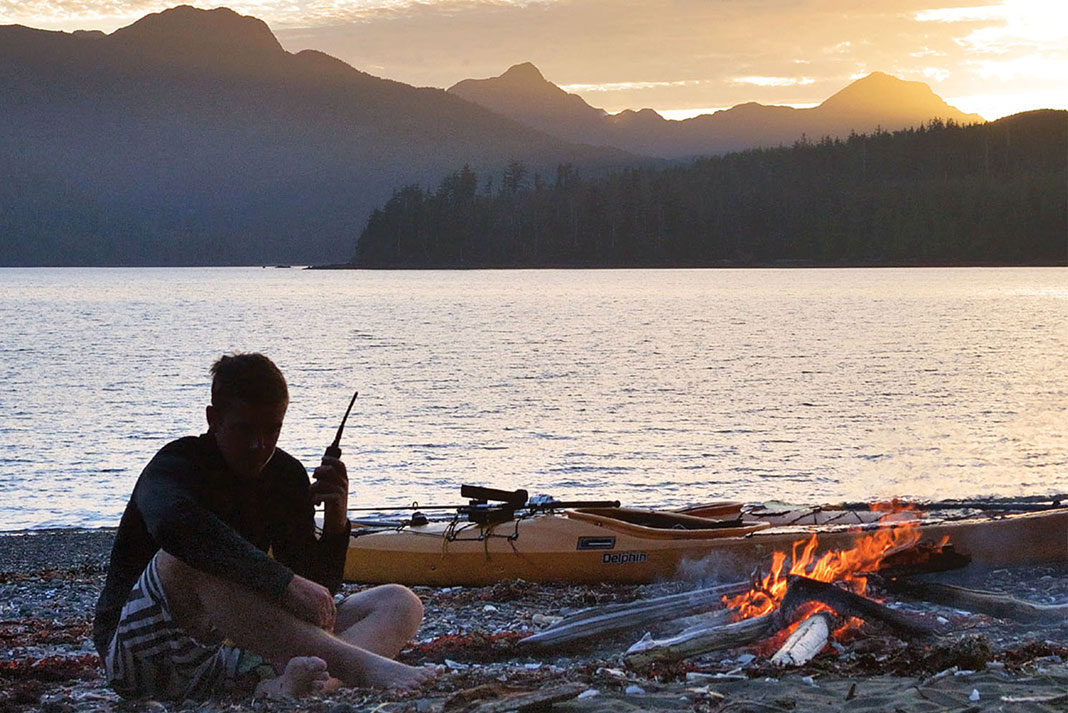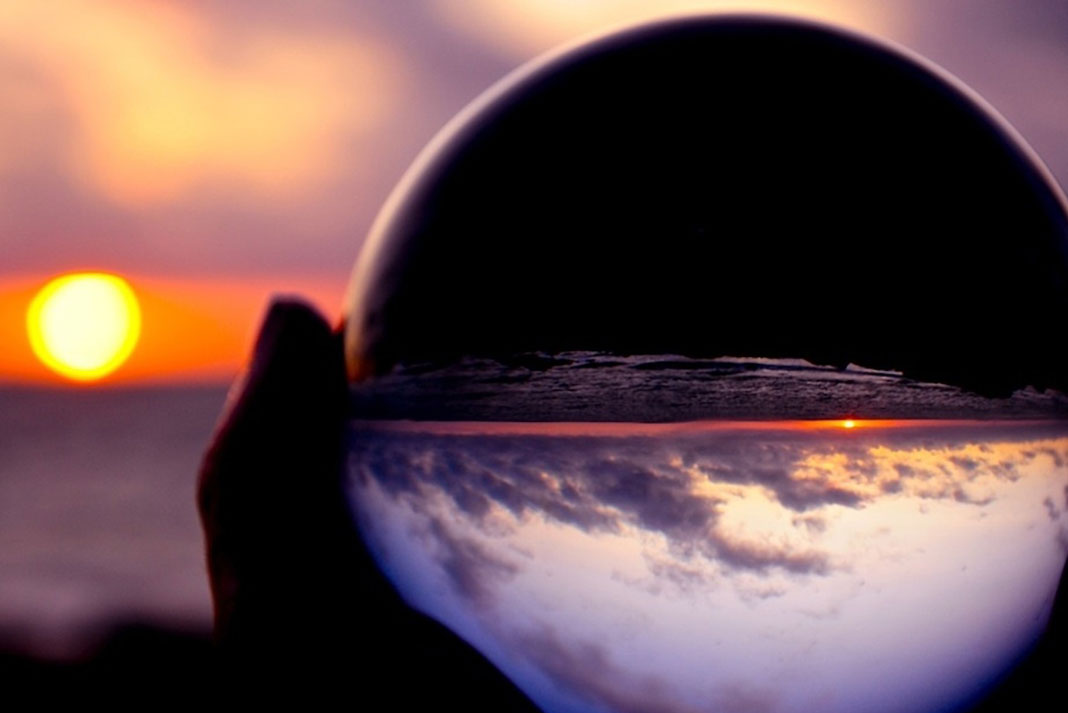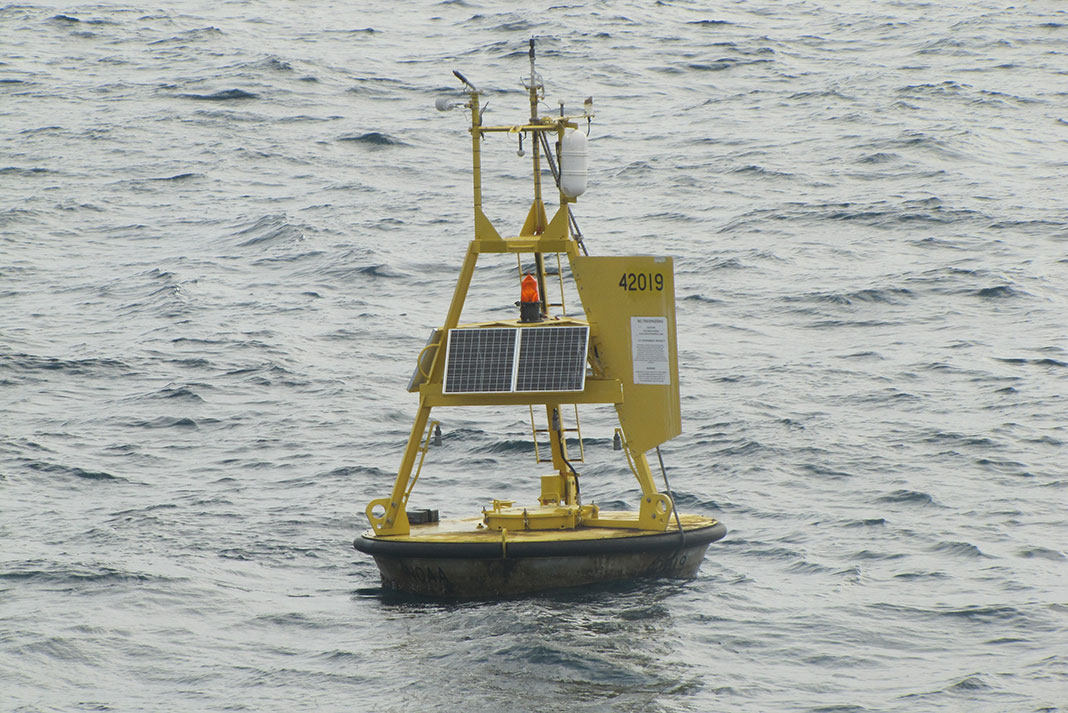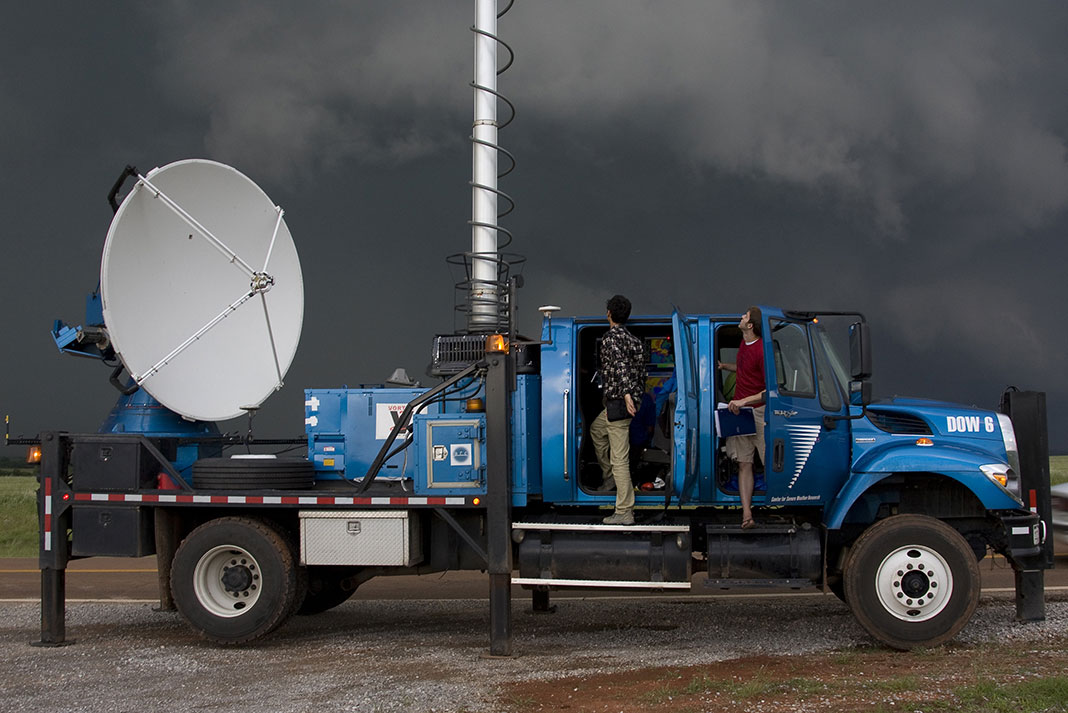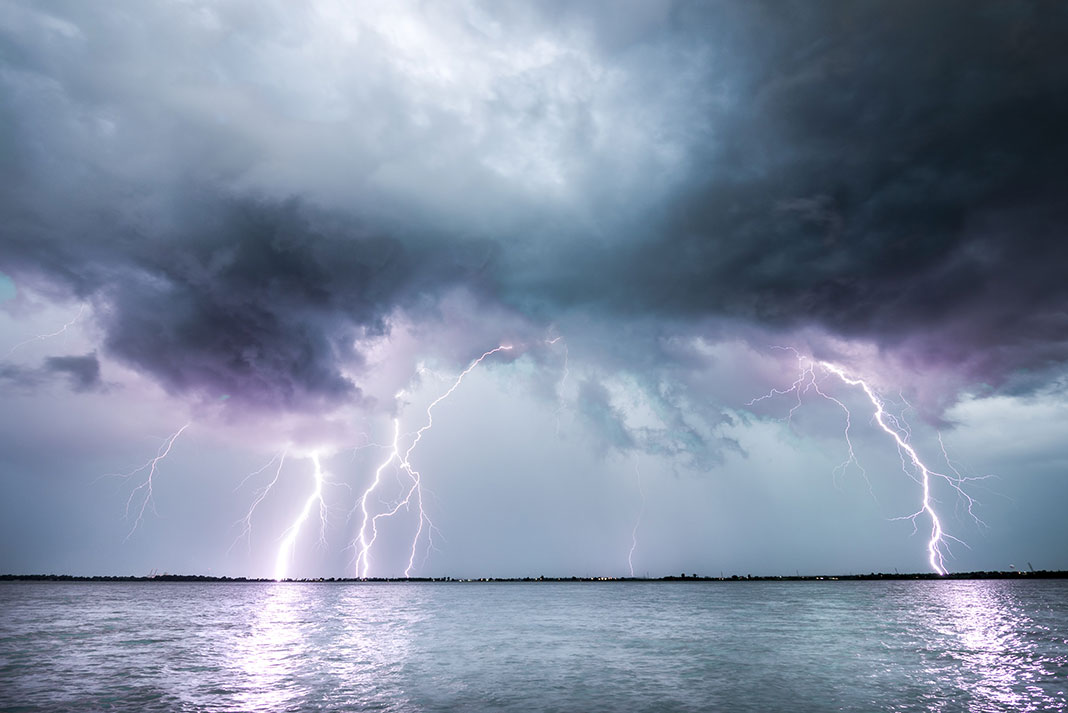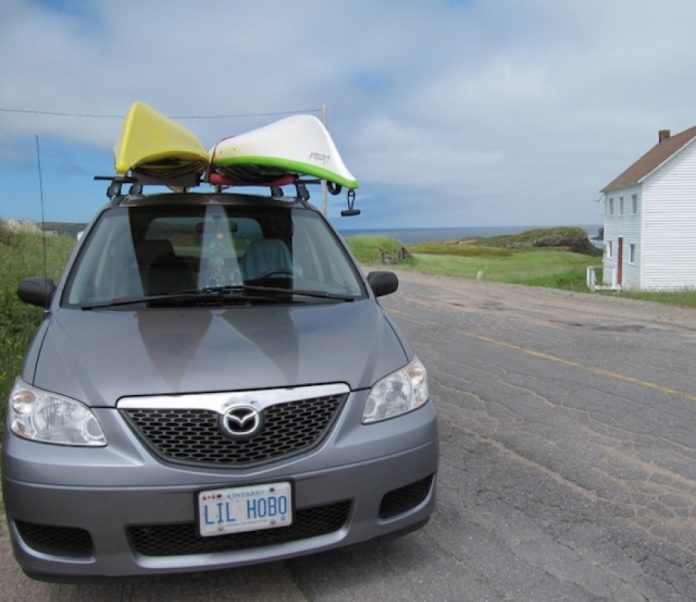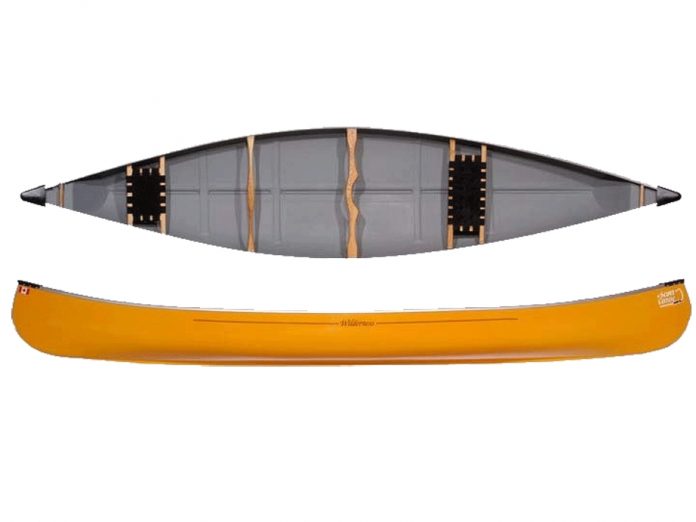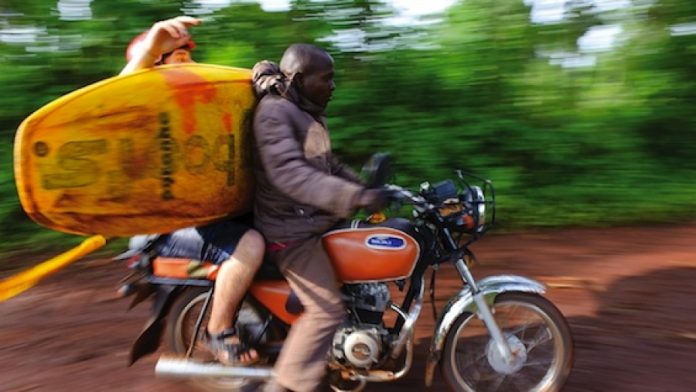This feature article originally appeared in Canoeroots and Family Camping magazine.
To overcome and work with the challenges that traveling by canoe presents, we’ve had to be ingenious, innovative, resourceful. Not just in creating new tools but in borrowing and plagiarizing from unlikely areas: medicine, the military, the space program, telecommunications, electronics, aviation and other better funded enterprises. Along the way, we’ve developed an appreciation for what works— from durable designs to clever chemistry. Occasionally, we’ve even stopped to thank the rainy heavens for a versatile polymer.
THE EXPERTS
Cliff Jacobson
HOME WATERS: RIVER FALLS, WISCONSIN
A highly respected outdoors author, ACA Hall of Famer and long-time wilderness guide, Jacobson is the most published canoeing and camping writer of this century, with book sales approaching one million copies. His manual Expedition Canoeing, first published in 1984, is the authoritative resource for wilderness canoe expeditions.
Kevin Callan
HOME WATERS: KAWARTHA HIGHLANDS, ONTARIO
Along with authoring 13 canoeing and camping guides, including the best selling The Happy Camper, Callan has been a key speaker at all the major canoe events across North America for over 25 years. Discussions on camping gear comprise no less than 45 pages in his recent book, Wilderness Pleasures: A Practical Guide to Camping Bliss.
THE BEST GEAR
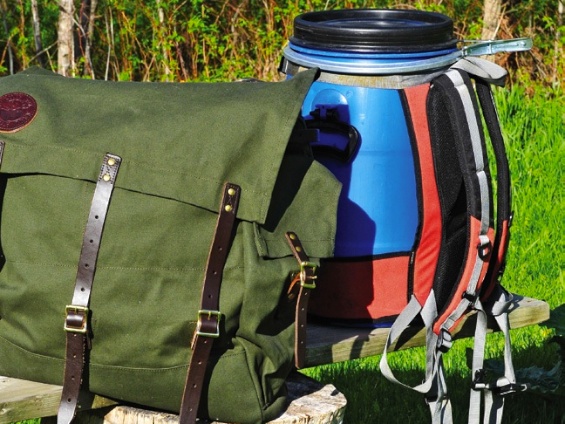
Duluth Pack
Patented in 1882 by French-Canadian leather worker Camille Poirier, the Duluth Pack, as it would come to be known, combined strength, endurance and elegance in a soft, appealing package that was easy to construct and repair. Poirier’s revolutionary addition of a sternum strap and still-novel shoulder straps to the traditional tump sack made this the great-granddaddy of all modern backpacks.
Picture a canvas pillowcase with leather shoulder straps, brass buckles and a long closing flap. Add a tumpline and you have a Duluth pack. Unlike modern packs that must be laid flat in a canoe—their mouths in contact with bilge water—Duluth packs sit upright, out of the wet. They are as comfortable to carry as any modern pack if you use the tumpline, and are also less expensive—important to the canoeist who may need several packs for a long trip. Space counts on a canoe trip; an empty Duluth pack can be folded and stored inside another pack. —CJ
Canoe Barrels
The plastic olive barrel is today’s waterproof version of a traditional wooden wanigan. In the mid-1980s, a few canoeists began picking them up at yard sales or delicatessens after realizing that the watertight containers were perfect for keeping gear dry. Now you can buy 30- and 60-liter barrels at any outdoor store.
Just like using a traditional wanigan, however, it’s a love-hate relationship. The barrel has all the advantages of the conventional wooden box—the lid even seconds as a cut- ting board—but in no way is it comfortable to carry. At least it doesn’t rely exclusively on a tumpline; the barrel also comes with shoulder straps or can be slipped inside an old canvas pack. I strongly recommend paying the extra cost for a high-quality barrel harness, like Ostrom Packs’ Voyager model, and getting a barrel with handles for hauling in and out of the canoe. —KC
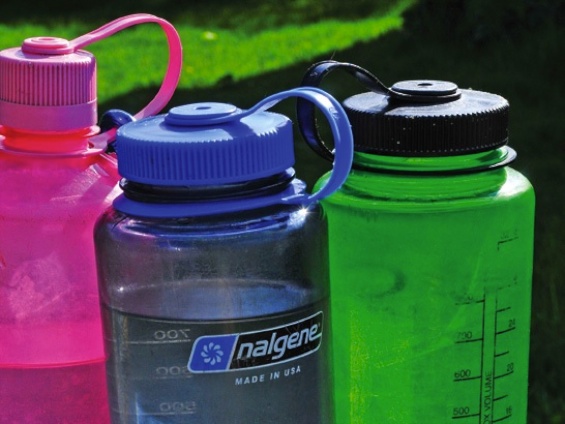
Nalgene Bottles
I discovered Nalgene bottles in the mid 1960s while teaching high school science in Indiana. Most of the chemicals we purchased came in them. When the bottles were empty, I scrubbed them out and zealously saved them for canoeing. They were the most air- and watertight bottles available at the time, and their thick plastic walls made them virtually indestructible. What really made them special was the thread design of the cap, which absolutely, positively, never leaked.
When Nalgene discovered that campers hoarded used bottles—in the ‘70s, the Rochester, New York-based company’s president noticed his son’s Boy Scout troop using them for everything from water bottles to dry match storage—they began producing them for the outdoors market. Colors, varied shapes and improved materials followed. Today, there are lots of competitive containers that work well for canoe tripping, but in my opinion, Nalgene are still the best. —CJ
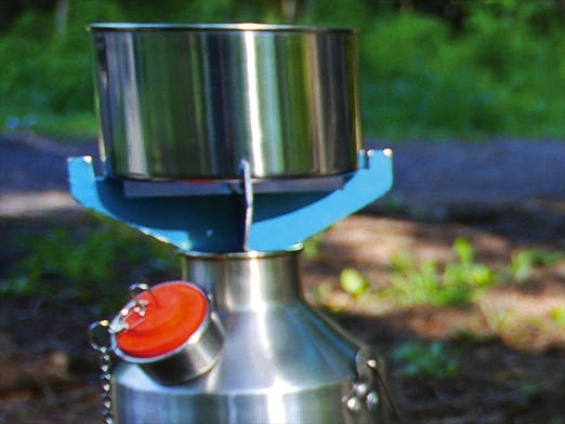
Kelly Kettle
After a bit of tinkering in his shed one winter, Patrick Kelly, a late 19th-century farmer in the County Mayo, Ireland, created a quicker way to boil up water for tea while out fishing along the shore of Lough Conn. By the 1970s, there were so many visiting anglers from the U.K. and Germany wanting to use a Kelly Kettle that Patrick’s grandson, Padraic, began manufacturing them to sell. Today, the Kelly family has taken the Kelly Kettle from a small cottage industry to commercial sales around the globe.
My introduction to the Kelly Kettle came during a family canoe trip in northern Scot- land. I knew nothing about it, but by the end of the trip, admiration replaced my skepticism. I’ve scarcely tripped without it since.
Basically a stick stove, the kettle’s ingenious double wall chimney design is what sets it apart. Simply light sticks and other combustible material in the base plate and watch the flames draw upward through the fire chamber like a chimney draft. A water jacket around the chimney rapidly boils the water even in the worst wet and windy conditions. —KC
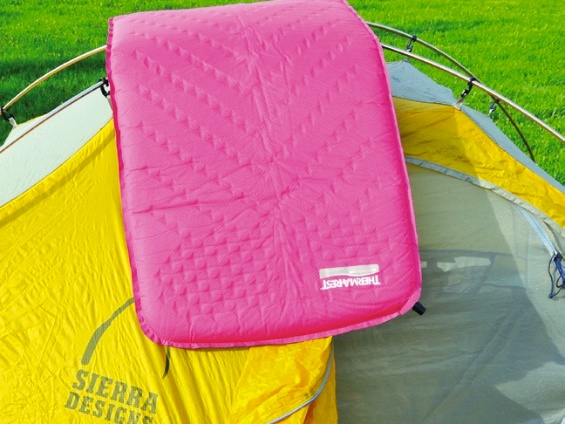
Sil-nylon Tents and Tarps
Silicone-coated fabrics are much lighter and stronger than those treated with polyurethane. Rainwater beads rather than pools, and the surface dries almost instantly. A sil-nylon tent will consume less pack space than an identical one treated with polyurethane.
Silicone-treated nylon was developed in the early 1990s as a high performance parachute fabric. The strength and impermeability sought by the jumpers makes it a dream material for tents and tarps, but because it doesn’t meet North American fire-retardant standards, it’s used sparingly on U.S. and Canadian tents. Sil-nylon may be used for exterior tent flies but not for inner canopies where people reside.
An approved fire-retardant, polyurethane-coated nylon tent won’t burn but it will melt, dripping hot liquid nylon onto your skin and resulting in burns that may be worse than those from an open flame. All the best European tents are built from sil-nylon, making the fire-retardant laws seem like a ploy to keep ultralight foreign tents out of North America! —CJ
Therm-a-Rest
Comfort has always been at the forefront of camp inventions, and few comforts rank as highly as a good night’s sleep. So it seems odd that it took so long to progress from sleeping on tree boughs to resting atop insulated air mattresses.
The story goes that in the early 1970s, John Burroughs and Lim Lea, two recently unemployed Boeing engineers and enthusiastic hikers from Seattle, focused their skills on creating a better sleeping pad. Existing air mattresses lacked insulation and cumbersome closed-cell foamies didn’t offer much padding from the hard ground. Their invention, the Therma-a-Rest, revolutionized how we sleep on trip.
Inspired by a simple kneeling pad available for use in the garden, Burroughs and Lea experimented with building prototypes from open-cell foam with a perforated polyurethane cover. They used a secondhand sandwich grill to fuse two layers together, creating a self-inflating pad. —KC
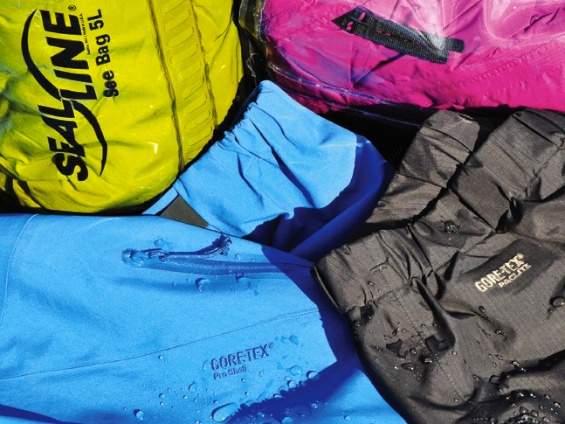
Gore-Tex
Conventional rain gear is waterproof but not breathable—sweat may make you wetter than rain! GORE-TEX fabric is both breathable and waterproof and therefore much more comfortable to wear. First appearing in a 1976 rainwear collection, the fabric is just one of more than 2,000 patented uses—from electronics to medical implants—for the polymer invented in 1969 and coined GORE-TEX. Most of today’s best garments, hats and boots feature GORE-TEX in their construction.
Early GORE-TEX garments leaked when they became soiled, but this problem has long been solved. Today, the major shortcoming is inadequate ventilation—the tiny micro-pores just can’t eliminate perspiration as quickly as uncoated nylon. For this rea- son, many paddlers rely on a porous nylon shell for wind and a GORE-TEX parka for rain. Jackets that have fully waterproof zippers are best. —CJ
Polyurethane
Heavy-duty plastic garbage bags don’t cut it when it comes to keeping the contents of my pack dry. Once I started packing along a few personal electronic devices, I couldn’t live with the anxiety level. So I switched to color-coded and variously sized SealLine dry bags and never worried again.
Dry bags aren’t a new innovation. Wax-impregnated canvas is an old trick developed by sailors in the mid-19th century. But the material became rigid in cold temperatures and melted like the shoes of the wicked witch in The Wizard of Oz when the mercury climbed.
PVC (polyvinyl chloride) first appeared in the 1920s and was labeled the miracle material—used for household piping and imbedded in fabric to create a tough, flexible waterproof cloth. The downside: PVC manufacturing produces toxic byproducts and off-gassing from the material contributes to ozone damage.
Transparent polyurethane and durable PU-coated nylon bags are the latest in- novation in waterproof packing. PU bags are lighter, more environmentally friendly, roll tightly closed in all temperatures and, best of all, are worry-free dry. —KC
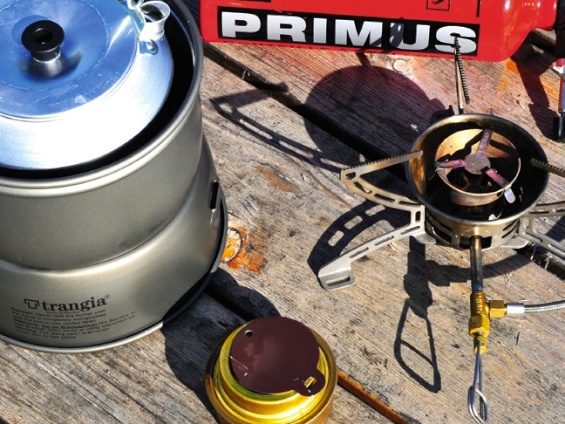
Primus Gas Stoves
The Primus stove was invented in 1892 by Swedish machinist Frans Lindqvist. Inspired by the handheld blowtorches used in the engine factory where he worked, Lindqvist’s stove was basically an upturned torch with a brass plate that evenly distributed the flame. His invention quickly earned a reputation for reliability and durability. It was used by Roald Amundsen, Admiral Byrd, George Mallory, Tenzing Norgay and virtu- ally every other 19th and early 20th century explorer.
Primus stoves have been in continuous production for more than a century and in my opinion they are still the best. They feature all-metal stainless steel, brass and alu- minum construction—there are no plastic parts to burn or break. Field maintenance is simple. For example, the aluminum pump consists of just two parts—the shaft and easily replaced pressure cup. These days, I rely mostly on a hot-burning Primus Omnifuel stove. But for solo trips, I often use my ancient (circa 1952) M71 Primus, which still runs flawlessly. —CJ
Trangia Stove
Canadian and American campers are fixated on petroleum-based stoves. The majority of us use either pressurized white gas or butane/propane stoves. I’m no exception, I love my MSR Dragonfly. But look on YouTube or beyond our borders and you’ll discover that everywhere else in the world, alcohol stoves rule.
Convinced that a spirit stove would be superior to existing solid fuel stoves, Swedish designer John E. Jonsson developed the first Trangia prototype in 1951. Today, the aluminum and brass stoves are top sellers across Europe.
A Trangia stove has many advantages. First, it’s extremely compact and lightweight. It fits in the palm of your hand and comes with its own nesting cook set. Alcohol stoves are also very simple; there’s nothing much to them so nothing much can go wrong. Best of all, the silent flame makes for an unbelievably quiet camp kitchen.
Get used to the Trangia’s quirks—longer boiling time than a pressurized fuel stove, difficult to see flame and harder to find fuel—and you just may find yourself converted. —KC
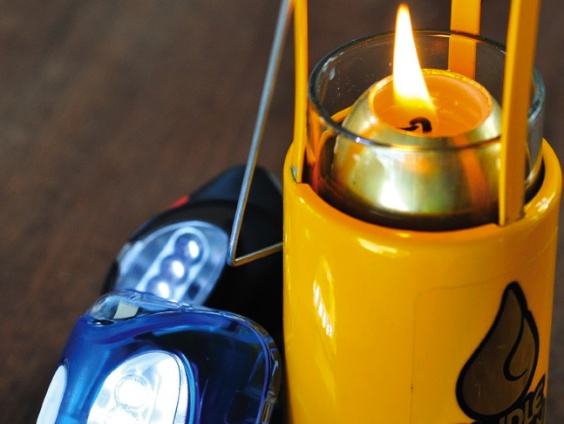
Candle Lantern
Hang a candle lantern in your tent on a cold, dreary night and watch the flickering shadows dance across the walls. The tiny flame warms your tent by about 10 degrees— enough to kill the chill. If you have keen eyes, it also provides light enough to read a book.
The Stonebridge folding candle lantern, patented in 1900 and used by American servicemen during the First World War, was the first folding lantern that could be easily packed and safely used inside a tent. Originally built from brass with mica windows, it folded flat to just half an inch thick for storage. But it had some faults: the mica windows were fragile and the base leaked wax.
The tubular candle lantern, which appeared in the 1950s, was more rugged and compact; it had sliding glass windows and didn’t leak. Like most modern paddlers, I rely largely on an LED headlamp for illumination. But for warmth and ambience, my candle lantern rules the night. —CJ
Headlamp
Compact, portable headlamps have literally changed the way we see the world. Thomas Edison developed the first headlamp for miners; the 1914 model came with a reflector, incandescent lamp and belt-mounted, wet-cell storage battery. The battery lasted only 12 hours—or one shift down in the mine—and put out two to five lumens of light.
Headlamps for recreational use developed through the sport of spelunking. Cave ex- plorer Fernand Petzl began experimenting with a fine-tuned mountaineering headlamp in 1973. Thanks to the development by Japanese researchers of bright white LEDs (light-emitting diodes) in the early ‘90s, modern headlamps are lighter, use far less battery power and push out an insane amount of light—90 lumens is typical—for their size.
Petzl remains in the lead for improving headlamp design. Recently, the company introduced a rechargeable, programmable battery pack for their Tikka 2 series. By plug- ging your headlamp into your computer via USB, you can program the battery to save juice or max it out and never stagger in the dark again. —KC
TECHNICAL TIMELINE
1789
The first multi-sheet topographic map series of an entire country, the Carte géométrique
36 de la France, is completed
1865
One of the earliest known prototype sleeping bags is used by English mountaineer Edward Whymper for the first ascent of the Matterhorn
1890s
Vacuum flask invented by Scottish chemist, James Dewar, is the earliest predecessor to the modern insulated mug
1898
Strike-anywhere match
1905
Sierra Cup
1914
Coleman 300 candlepower gas lantern is a staple in rural American homes and on WWI frontlines
1930s
Orienteering fad sweeps Sweden, Silva handheld compass debuts
1935
Nylon
1942
Coleman produces the first multi-fuel pocket stove at the request of the U.S. Army. Along with the Jeep, it is one of the two most important pieces of noncombat equipment in the war effort
1945
Teflon non-stick coating
1947
Butane pocket lighter
1950
Double-burner Coleman stove becomes a staple among car-camping Americans
1959
Bill Moss licenses the Pop Tent—one of the very first dome tents made with bent poles—to Thermos. The two-man version weighs over 11 pounds.
1970s
Cordura, a canvas-like nylon, is all the rage thanks to Jansport’s trendy college daypacks
1975
The North Face introduces the world’s first geodesic dome backpacking tent
1979
Polar Fleece
1983
Leatherman launches first multi-tool, the PST (Pocket Survival Tool)
1989
The Original Bug Shirt Company begins prototype testing
1993
The Global Positioning System (GPS)—sponsored by the U.S. Department of Defense— becomes operational
1994
New Zealand-based Icebreaker produces the first commercially available me- rino wool thermal underwear
1998
Iridium launches the world’s first handheld satellite phone
2008
SPOT satellite messenger
This article originally appeared in Canoeroots & Family Camping, Fall 2012. Download our freeiPad/iPhone/iPod Touch App or Android App or read it here.
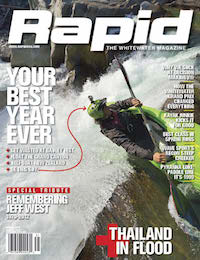 This article first appeared in the Spring 2013 issue of Rapid Magazine. For more great content, subscribe to Rapid’s print and digital editions here.
This article first appeared in the Spring 2013 issue of Rapid Magazine. For more great content, subscribe to Rapid’s print and digital editions here.



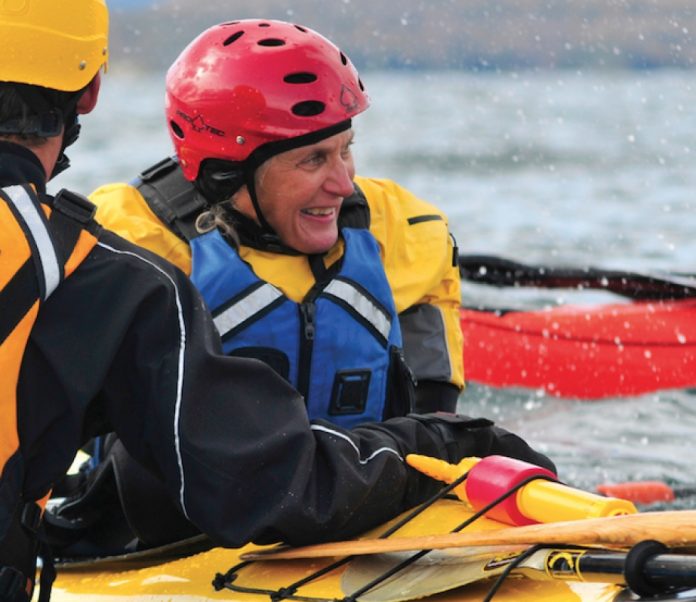
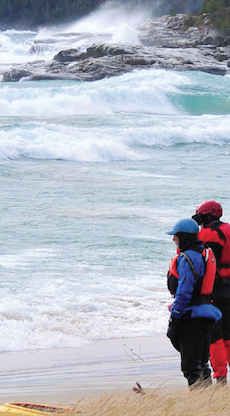 “I signed up for this by mistake,” Susan confides, her secret feeling safe within our intimate huddle. Nervous laughter sends puffs of condensation into the chill air. We’re pressed beneath a malevolent sky, shoulders braced against a biting wind that cuts through our layers of fleece and wool, Gore-Tex and neoprene. Booties crunch on pea gravel coagulated with ice as we bob up and down, trying to get warm. Susan is the only one who’s said it, but I scan the pinched faces of the others, wondering if I will see it written there. Mistake.
“I signed up for this by mistake,” Susan confides, her secret feeling safe within our intimate huddle. Nervous laughter sends puffs of condensation into the chill air. We’re pressed beneath a malevolent sky, shoulders braced against a biting wind that cuts through our layers of fleece and wool, Gore-Tex and neoprene. Booties crunch on pea gravel coagulated with ice as we bob up and down, trying to get warm. Susan is the only one who’s said it, but I scan the pinched faces of the others, wondering if I will see it written there. Mistake.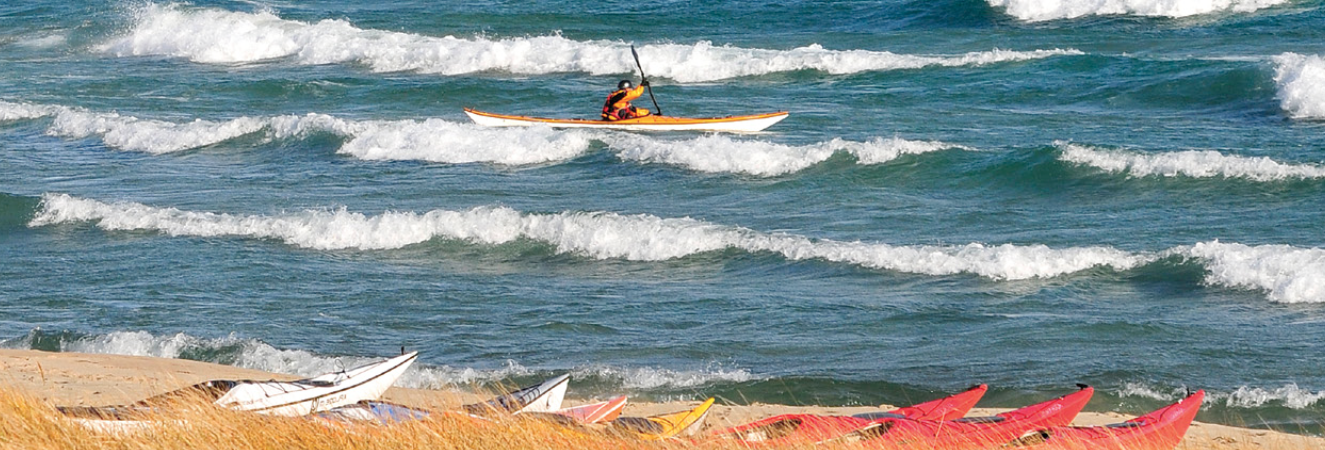
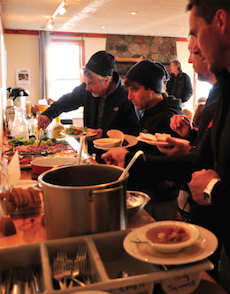 Wikle is expecting 40 participants for the rough-water weekend, and when they join the nearly 20 coaches in the lodge’s dining room for lunch, the scene resembles a crowded school cafeteria. Or a class of ’83 reunion— the demographic at Gales is typical for sea kayaking; clearly adrenaline-charged surfs aren’t just a young person’s game.
Wikle is expecting 40 participants for the rough-water weekend, and when they join the nearly 20 coaches in the lodge’s dining room for lunch, the scene resembles a crowded school cafeteria. Or a class of ’83 reunion— the demographic at Gales is typical for sea kayaking; clearly adrenaline-charged surfs aren’t just a young person’s game. Sunday morning, sudden squalls alternate with sunshine and whitecaps are building beneath the schizophrenic sky. Superior has kept the coaches on their toes all weekend. Every day begins with an instructors’ planning meeting—a dozen of the international sea kayaking community’s brightest luminaries gathered around a battered wooden table and blazing woodstove in the lodge’s steamy kitchen. As you might expect, there’s plenty of discussion: stay and play at the river mouth? Carpool to a nearby beach? Or try to paddle to the beach?
Sunday morning, sudden squalls alternate with sunshine and whitecaps are building beneath the schizophrenic sky. Superior has kept the coaches on their toes all weekend. Every day begins with an instructors’ planning meeting—a dozen of the international sea kayaking community’s brightest luminaries gathered around a battered wooden table and blazing woodstove in the lodge’s steamy kitchen. As you might expect, there’s plenty of discussion: stay and play at the river mouth? Carpool to a nearby beach? Or try to paddle to the beach?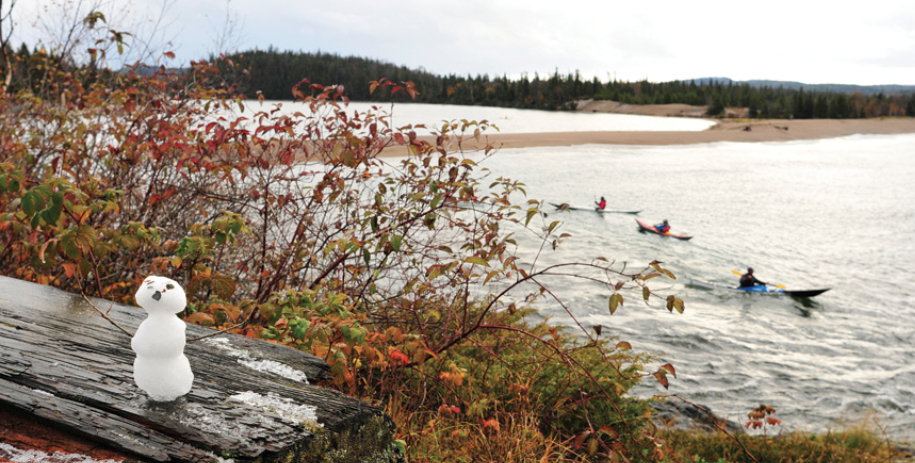
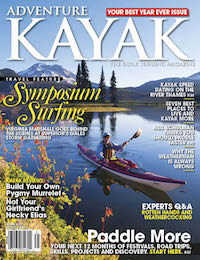 This article first appeared in the Spring 2013 issue of Adventure Kayak Magazine. For more great content, subscribe to Adventure Kayak’s print and digital editions
This article first appeared in the Spring 2013 issue of Adventure Kayak Magazine. For more great content, subscribe to Adventure Kayak’s print and digital editions 